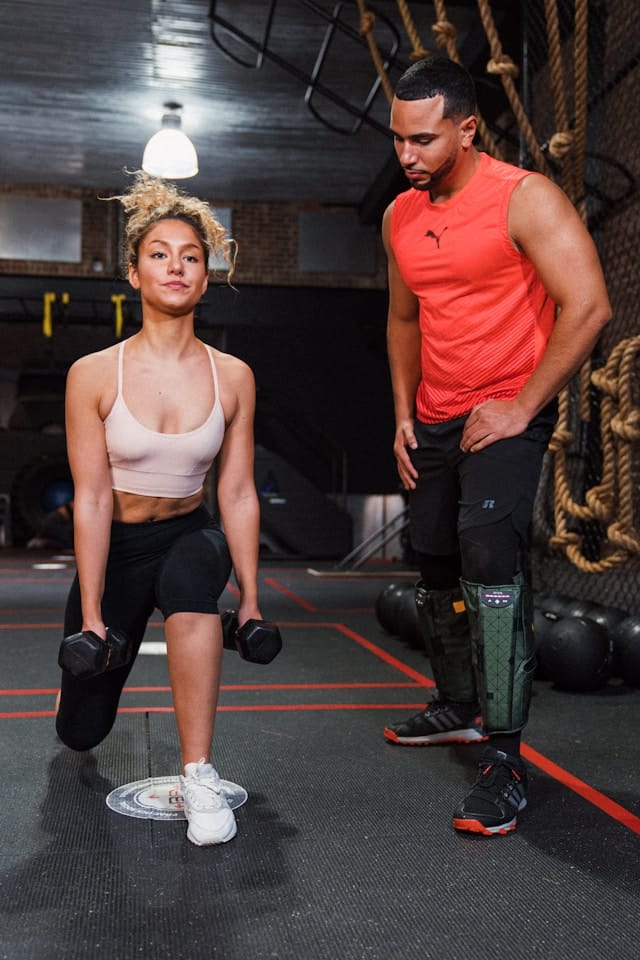In this modern digital age, technology has become an integral part of our lives, permeating nearly every aspect of our daily routines. Even the realm of sports is no exception to this. The integration of various technological innovations, including wearable devices and data analysis tools, are helping athletes and their coaches to monitor and enhance their physical performance more effectively. Today, we will delve in to explore how athletes, teams, and coaches are utilizing these advancements to step up their game.
Utilizing wearable technology for performance monitoring
The first and foremost way athletes are leveraging technology is through the use of wearable devices. These gadgets, usually fitted with various types of sensors, collect a wide range of data from the athlete’s body during training and game time.
A lire en complément : How do sports organizations address the mental and emotional well-being of their fan base?
The information gathered by these devices goes beyond simple statistics like speed and distance covered. They measure aspects such as heart rate, body temperature, hydration levels, and even sleep patterns. This data can provide an incredibly detailed picture of an athlete’s overall health, fitness, and performance levels.
But how exactly does this help? Well, by continuously monitoring these variables, athletes and their coaches can spot any potential issues or anomalies in real time. This allows them to adjust their training and recovery programs on the fly to prevent injury, maximize training benefits, and ensure optimum performance when it matters the most.
A découvrir également : What is the impact of sports on national pride and identity during international competitions?
Data analysis for performance optimization
The data collected by wearable devices, however, is just raw information. To turn this into actionable insights, they need to be analyzed. This is where the power of data analysis comes to play. By using sophisticated software and algorithms, athletes, and their teams can glean meaningful insights from the mass of data collected.
For instance, by analyzing a player’s heart rate data over time, coaches can determine if the athlete is over-training and risking injury or burnout. Alternatively, they might find that the player isn’t working hard enough and needs to step up their training intensity.
Similarly, by examining sleep patterns, they can provide personalized advice on when an athlete should rest to make the most of their recovery time. This level of personalized and precise feedback is invaluable in fine-tuning an athlete’s training plan and game strategy, contributing to improved performance and results.
Using technology for real-time feedback and coaching
Technology also allows athletes and coaches to receive and provide real-time feedback during training and games. Many wearable devices and apps can provide immediate feedback on the athletes’ performance, allowing them to make adjustments on the spot.
This feature is particularly useful during training sessions. For example, a device may alert an athlete if their heart rate goes outside the optimal range for a particular training session, allowing them to adjust their intensity in real time.
Moreover, coaches and trainers can use these technologies to provide immediate feedback to their players, correcting form or technique as soon as they spot an issue. This immediate feedback loop can accelerate learning and skill development, leading to more efficient training and improved performance in the long run.
Technology for injury prevention and recovery
Injury is a constant concern for athletes. One wrong move, one instance of overuse, or even a simple accident can sideline a player for weeks, if not months. That’s where technology can also lend a helping hand.
Various wearable devices and apps can help detect early signs of potential injuries. By monitoring variables like heart rate variability, sleep quality, and even mood and mental wellbeing, these tools can alert athletes and their coaches to potential overtraining or stress-related issues.
Moreover, technology can also aid in recovery post-injury. There are now apps and devices that guide athletes through their rehabilitation exercises, track their progress, and provide feedback to their healthcare providers. This not only helps the athlete recover faster but also ensures they do so safely, reducing the risk of re-injury.
The role of technology in team sports
Finally, it’s not just individual athletes who benefit from technology. Teams and their coaches can use these tools to monitor and enhance the performance of their players collectively.
By integrating data from all players, teams can gain insights into their overall performance, identify strengths and weaknesses, and strategize accordingly. They can also monitor the health and fitness levels of their players, ensuring everyone is at their best come game time.
Moreover, technology can facilitate communication and coordination among team members. Apps and platforms can help players stay in sync, share strategies, and discuss performance, fostering a more cohesive and successful team.
In conclusion, the integration of technology in sports provides athletes and their teams with a wealth of data and insights that can enhance their physical performance. While the use of these tools is not a guarantee of success, they certainly provide a competitive edge in the increasingly demanding world of sports.
Embracing Virtual Reality for Training and Performance Enhancement
One of the most fascinating advancements in sports technology is the rise of virtual reality (VR). Athletes and teams are increasingly using VR to enhance their training programs and improve their performance. But how does it work?
Virtual reality technology can create detailed, immersive simulations of real-world sports scenarios. Athletes can practice their skills and strategies in these virtual environments, gaining valuable experience without the risk of injury. For example, a football player could rehearse a specific play in VR, or a golfer could practice their swing on a virtual golf course.
This kind of immersive training can significantly boost an athlete’s performance. The unlimited practice opportunities provided by VR can enhance skill acquisition and retention. Athletes can experiment with different techniques and strategies, receiving immediate feedback and making necessary adjustments in real time.
Moreover, VR can also be used for mental preparation. Athletes can visualize their performance in different scenarios, helping them to cope with pressure and improve their focus. As such, virtual reality technology is not only a physical training tool but also a powerful psychological one.
The Future of Technology in Sports Performance
The future of sports technology looks promising. The advancements in wearable technology, data analytics, VR, and other cutting-edge technologies are revolutionizing the sports industry. In the near future, we may see further integration of AI and machine learning in sports analytics, leading to even more accurate predictions and personalized training programs.
The future may also bring more advanced wearable devices, capable of monitoring a broader range of physiological parameters. This could provide even deeper insights into an athlete’s health and performance. Moreover, the development of smart clothing and equipment could change the way we view and interact with sports.
In the realm of injury prevention and recovery, advancements in sports medicine and physiotherapy, facilitated by technology, could lead to more effective treatment strategies and faster recovery times. Furthermore, the use of technology may also help to improve the fairness and integrity of sports, through better detection of foul play and cheating.
In conclusion, technology is playing an increasingly crucial role in enhancing sports performance. From wearable devices that monitor heart rate in real time, to data-driven training programs, and even virtual reality training sessions, technology is providing athletes with a competitive edge. As technological advancements continue to evolve, it will be exciting to see how they further shape the future of sports performance.






